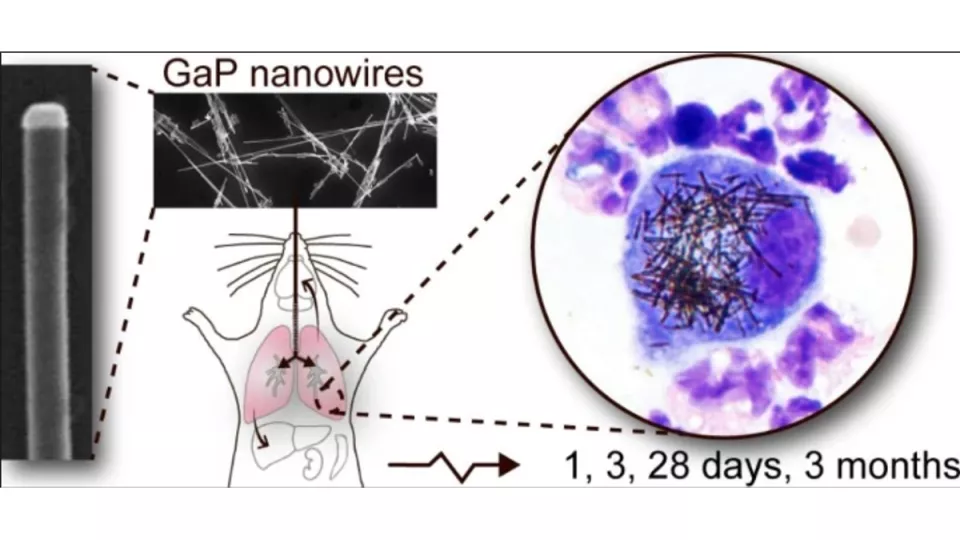In a collaboration with the National Research Center for the Working Environment in Copenhagen, led by Ulla Vogel, and the Finnish Institute of Occupational Health in Helsinki, researchers from NanoLund have investigated the toxicity of gallium phosphide nanowires in mice after lung exposure.
The study was initiated in 2017 with a pilot study including 1 dose and 3 time points, supported by NanoLund. The results showed that lung exposure to the nanowires induces an inflammatory response and allergic response similar to the one elicited by Mitsui-7 multiwall carbon nanotubes, which are classified as possibly carcinogenic to humans.
Translocating from the lungs to several other organs
An extensive follow-up study was then initiated, investigating the dose response and further time points, up to 3 months after exposure. The results confirmed the similarity between the inflammatory and allergic responses elicited by nanowires and Mitsui-7 nanotubes. The nanowires underwent partial dissolution in the lung with an estimated half-life of ≈ 3 months. Nanowires were found to translocate from the lung to reach secondary organs and were found in the liver, kidney, brain, uterus, and spleen. The results overall suggest that inhalation of gallium phosphide should be avoided.
The study also shows the relevance of using nanowires as models for one-dimensional nanoparticles, since they are easy to localize in tissue, using electron- and optical microscopy.
NanoLund has always implemented cautionary measures to prevent nanowire exposure, which were based on guidance from the NFA (National Research Centre for the Working Environment).
Huge amount of high-quality data
“It feels great to have finally published this study, after so much work during so many years! This collaborative work produced a huge amount of high-quality data. By combining many experimental methods, we could investigate the inflammatory and allergic responses elicited by nanowires, as well as track and characterize the nanowires in lungs and distant organs. The study also shows the relevance of using nanowires as models for one-dimensional nanoparticles, since they are easy to localize in tissue, using electron- and optical microscopy”, says Christelle Prinz, professor at Solid State Physics and a Principal investigator at NanoLund.
Read the article in the Journal of Nanobiotechnology 21, 322 (2023):
Pulmonary toxicity and translocation of gallium phosphide nanowires to secondary organs following pulmonary
by Trine Berthing, Mercy Lard, Pernille H. Danielsen, Laura Abariute, Kenneth K. Barfod, Karl Adolfsson, Kristina B. Knudsen, Henrik Wolff, Christelle N. Prinz & Ulla Vogel


